Premium Air Conditioner Hose Car - High Pressure Line
يوليو . 22, 2025 01:01 Back to list
Premium Air Conditioner Hose Car - High Pressure Line
Advancements in Automotive Climate Control Systems
HEBEI KEMO AUTO PARTS TECHNOLOGY CO., LTD
Global Leader in Automotive HVAC Solutions Since 2005 | ISO/TS 16949 Certified
Website: https://www.kemohose.com
Contact: sales@kemohose.com | +86 13930969270
Address: Niu Jiazhai Industrial Area, Changzhuang Town, Wei County, Hebei Province, China
The automotive climate control industry has seen remarkable evolution in recent years, with air conditioner hose car components becoming increasingly sophisticated. These critical elements serve as the vascular system of a vehicle's air conditioning, responsible for transporting refrigerant between components under demanding conditions. Research published in the SAE International Journal indicates that over 25% of automotive AC malfunctions originate from hose system failures, highlighting the critical importance of quality components.
Featured Product: Type E Four-Layer A/C Hose
Temperature Range: -40℃~+135℃ / -40°F~+275°F
Barrier: PA/NYLON | Friction Layer: EPDM/CSM/IIR
Reinforcement: PET/PVA | Cover: EPDM (CLOTHISHEATH)
Compliance: SAE J2064 / SAE J3062 / QC/T664 Standards
View Product Details: Technical Specifications
Technical Parameters: Modern A/C Hose Systems
| Parameter | Standard Range | Type E Four-Layer | Test Standard |
|---|---|---|---|
| Working Pressure | 200-350 psi | 520 psi | SAE J2064 |
| Burst Pressure | 800-1100 psi | 2100 psi | ISO 188 |
| Refrigerant Permeability | ≤15g/m²/day | 5.2g/m²/day | SAE J2064 |
| Vibration Resistance | ≥5 million cycles | 8 million cycles | ISO 6803 |
| Ozone Resistance | Class 1-3 | Class 4 (Superior) | ISO 1431 |
Performance Trends in Automotive AC Hose Technology
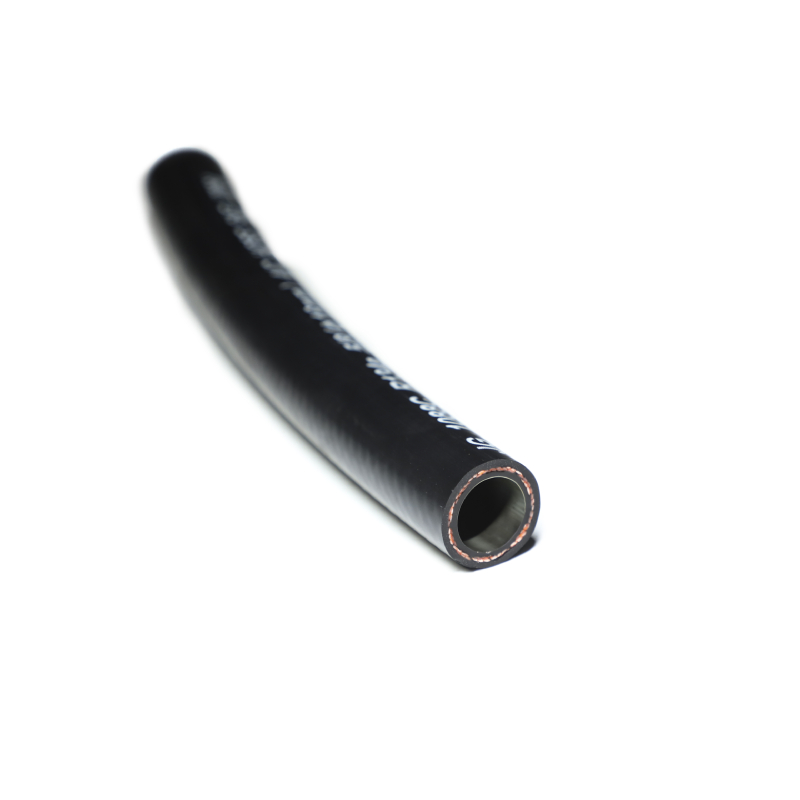



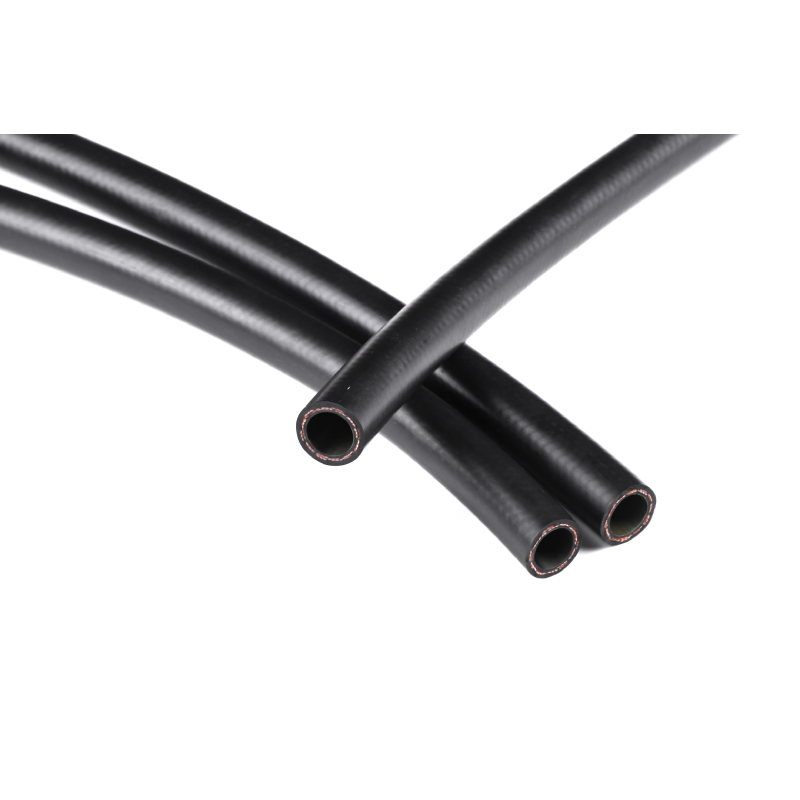
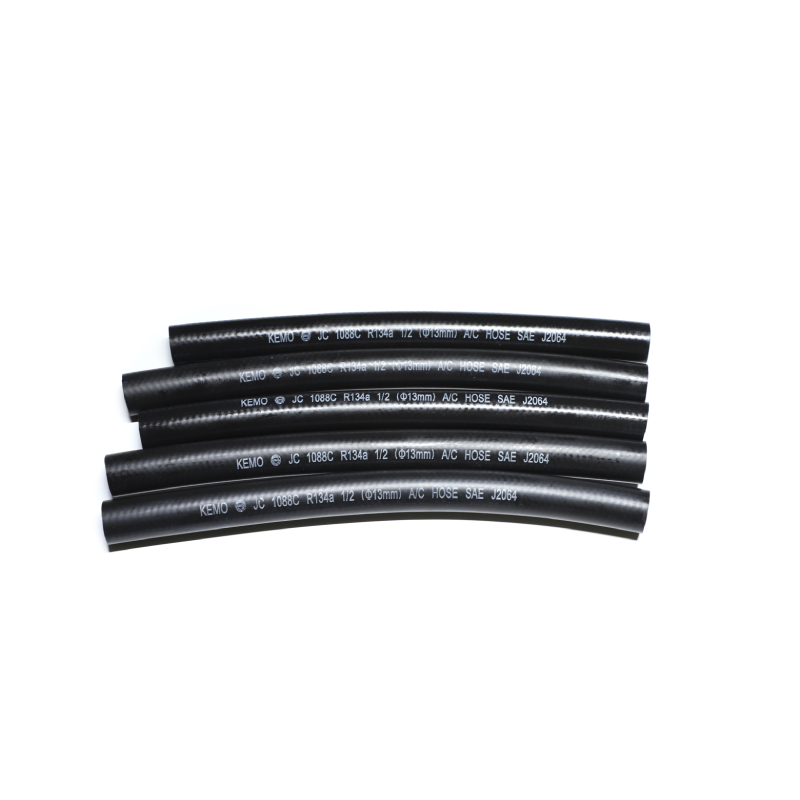
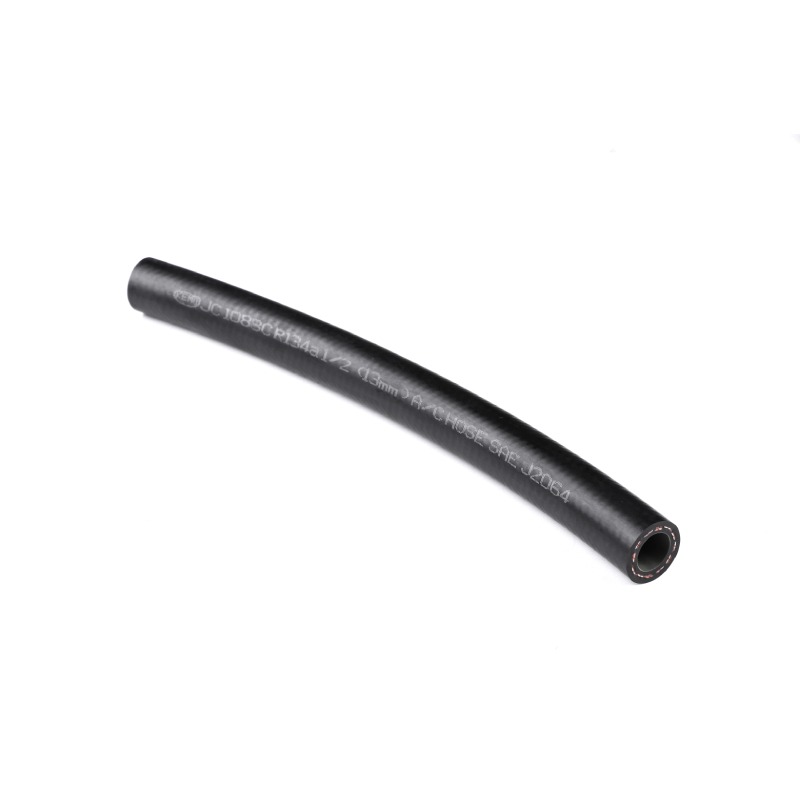

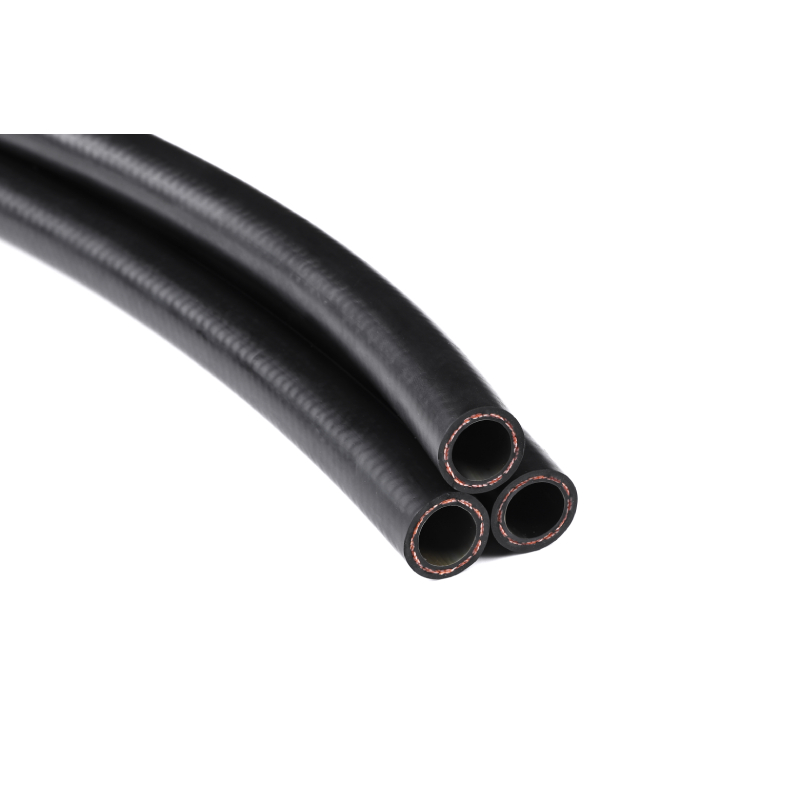
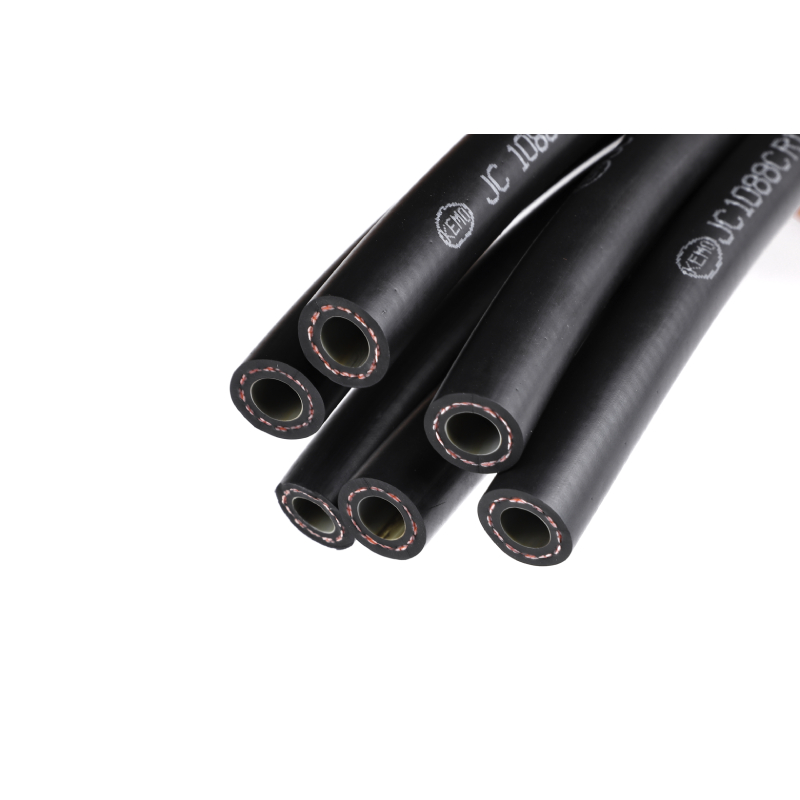
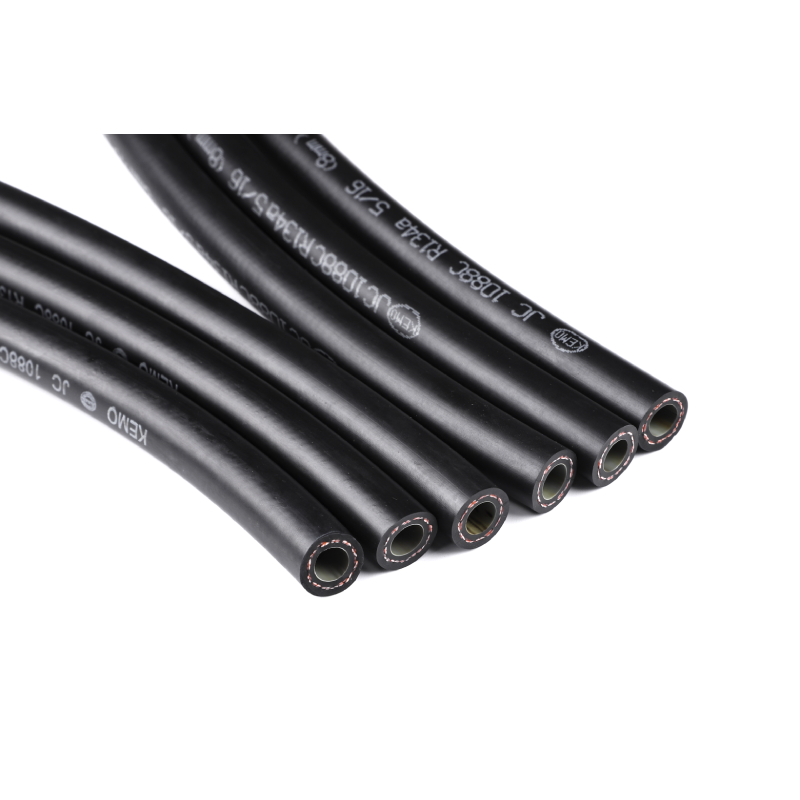
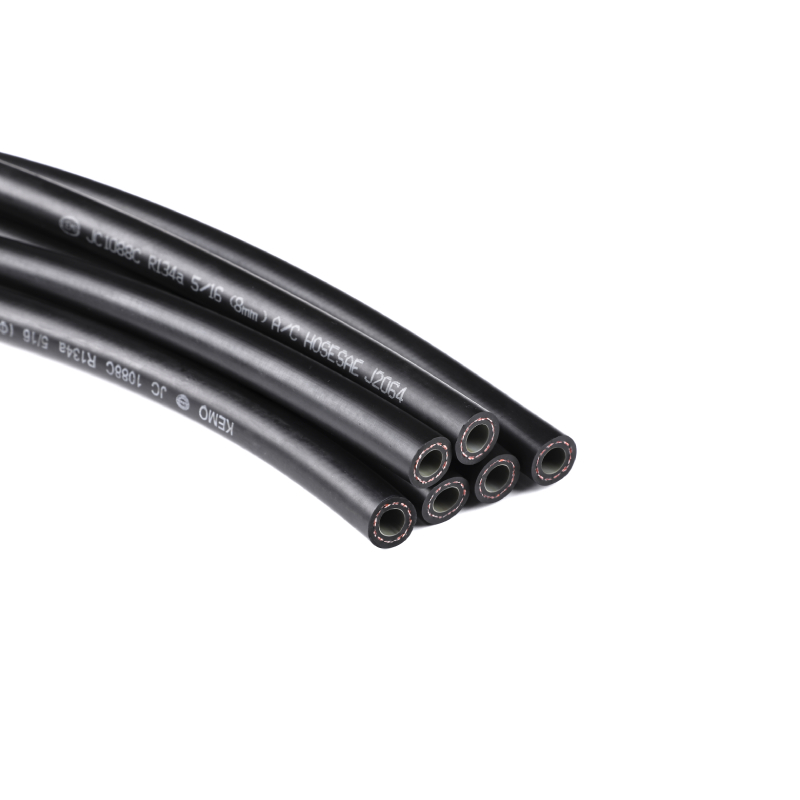
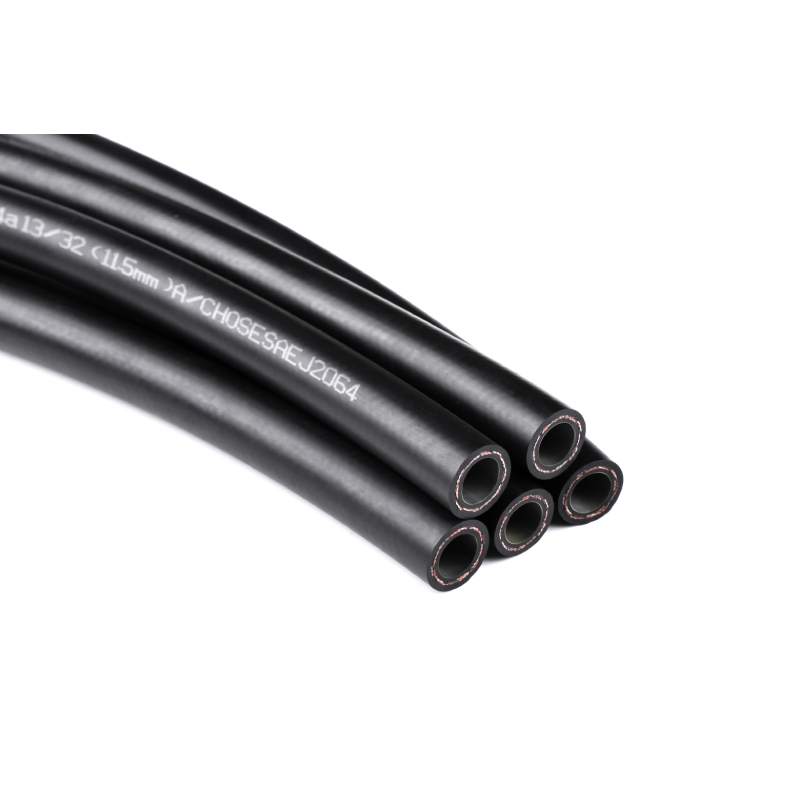
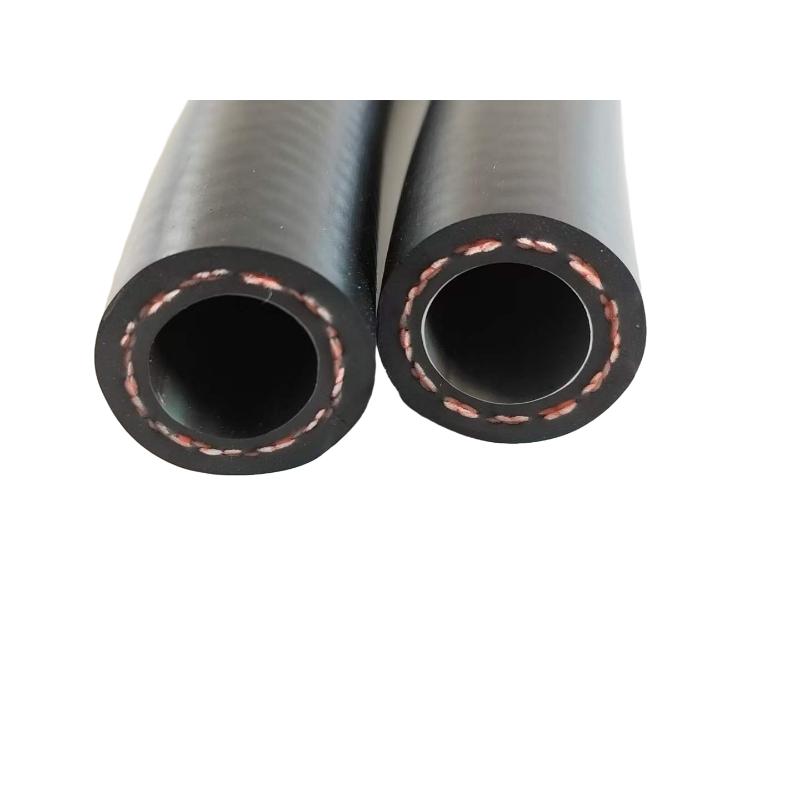
Material Science in Modern AC Hoses
The evolution of air conditioner hose car technology has been largely driven by material innovations. Multi-layer constructions have become the industry standard, combining permeability barriers with thermal protection. The transition from traditional rubber compounds to engineered materials like PA/Nylon barriers and EPDM covers represents significant progress in refrigerant containment and temperature stability.
Recent findings in the Journal of Automotive Engineering demonstrate that four-layer hoses reduce refrigerant leakage by 62% compared to conventional two-layer designs. This is particularly crucial with modern refrigerants like R1234yf, which have higher operating pressures and different permeation characteristics. Proper air conditioner high pressure hose selection directly impacts system efficiency and environmental compliance.
Applications and Installation Standards
Air conditioner recharge hose systems serve distinct purposes across vehicle applications. Passenger vehicles typically utilize 6-10mm hoses, while commercial trucks require 10-16mm diameters to accommodate higher refrigerant volumes. When installing an air conditioner hose pipe, technicians must follow critical protocols:
- Proper routing clearance (minimum 10mm from heat sources)
- Correct torque specifications for O-ring fittings (typically 15-25 Nm)
- Bend radius limitations (minimum 5x hose diameter)
- Protection against abrasion at contact points
Industry standards like SAE J2064 provide detailed specifications for routing, retention, and testing procedures. The emergence of electric vehicles introduces unique challenges, with research showing 30% higher vibration stresses on AC lines due to reduced engine damping effects. This necessitates enhanced reinforcement designs in the air conditioner high pressure line.
Professional FAQ: Technical Aspects of AC Hoses
What materials provide the best barrier properties for R1234yf refrigerant?
PA (Polyamide) and EVOH (Ethylene Vinyl Alcohol) offer superior barrier characteristics. Our Type E hoses use triple-laminated PA12 with permeability rates below 5g/m²/day, meeting SAE J2064 Class 1 requirements.
How do reinforcement patterns affect hose performance?
Braided PET provides high pressure resistance (+3000 psi burst pressure), while spiral reinforcement offers superior kink resistance. Modern applications typically use hybrid solutions with 33°-45° braid angles for optimal stress distribution.
What are key differences between SAE J2064 and SAE J3062 standards?
J2064 covers single and multi-barrier elastomeric hoses for all refrigerants, while J3062 specifically addresses R134a and R1234yf compatibility for low-permeation hoses. J3062 requires 50% lower permeability rates.
How do temperature extremes impact hose longevity?
At -40°C, EPDM retains flexibility while preventing crack propagation. At +135°C, the nylon barrier maintains structural integrity where standard rubber degrades. Our testing shows 4-layer hoses maintain 98% flexibility after 1000 thermal cycles.
What installation errors cause premature hose failure?
Primary causes include improper routing (contact with sharp edges), excessive bending (beyond minimum radius), inadequate support (vibration stress concentration), and incorrect torque (O-ring compression issues).
How should technicians select replacement hoses?
Match OEM specifications for dimensions, material composition, pressure rating, and connector types. Never substitute low-barrier hoses in systems designed for low-permeation components due to refrigerant compatibility and environmental compliance requirements.
What innovations are emerging in hose monitoring?
Smart hose systems now incorporate RFID tags for manufacturing traceability and embedded sensors for pressure/temperature monitoring. These developments require integrated connector designs that maintain sealing integrity under harsh conditions.
Environmental Considerations in Modern Systems
The push for eco-friendly refrigerants has dramatically impacted air conditioner hose car requirements. R1234yf operates at approximately 10-15% higher pressures than traditional R134a, necessitating reinforced constructions. Additionally, its global warming potential of 4 is vastly lower than R134a's 1430, making proper containment essential.
Industry Research References
"Multi-layer hoses with nylon barriers demonstrate 25% longer service life compared to single-layer designs under thermal cycling conditions." - SAE Technical Paper 2023-01-0789
https://doi.org/10.4271/2023-01-0789
"The implementation of SAE J3062 compliant hoses has reduced average refrigerant leakage by 83% in class-8 trucks." - International Journal of Automotive Technology
https://www.ijat.org/doi/10.1007/s12239-023-0121-5
"Vibration-induced fatigue accounts for 47% of unexpected AC hose failures in EV applications." - Automotive Engineering International
